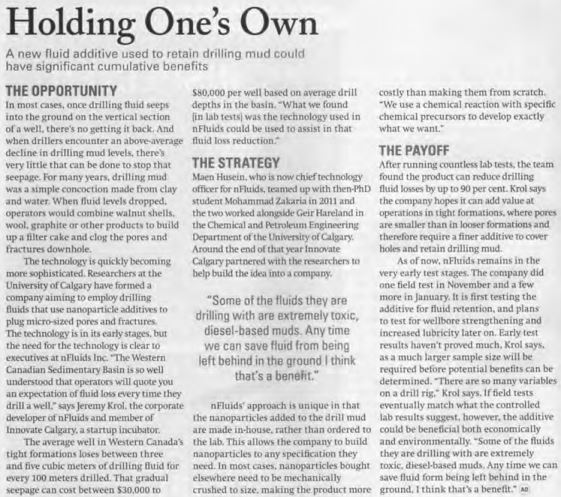Holding One’s Own on Lost Circulation: A new fluid additive used to retain drilling mud could have significant cumulative benefits by Alberta Oil Magazine, February 2014 Issue
In most cases, once drilling fluid seeps into the ground on the vertical section of a well, there’s no getting it back. And when drillers encounter an above-average decline in drilling mud levels, there’s very little that can be done to stop that seepage. …
The average well in Western Canada’s tight formations loses between three and five cubic metres [three and five thousand litres] drilling fluid for every 100 metres drilled.
“Some of the fluids they are drilling with are extremely toxic, diesel-based muds. Any time we can save fluid from being left behind in the ground, I think that’s a benefit.”
[Refer also to:
Natural Gas Operations from a Public Health Perspective by Theo Colborn, Carol Kwiatkowski, Kim Schultz, and Mary Bachran, accepted for publication September 4, 2010, in International Journal of Human and Ecological Risk Assessment 17 (2011): 1039-1056.
For many years, drillers have insisted that they do not use toxic chemicals to drill for gas, only guar gum, mud, and sand. While much attention is being given to chemicals used during fracking, our findings indicate that drilling chemicals can be equally, if not more dangerous. [Emphasis added]
EnCana Corporation, Applications for Licences for 15 Wells, a Pipeline, and a
Compressor Addition, Wimborne and Twining Fields Decision by EUB (now AER), October 31, 2006
EnCana acknowledged that it experienced lost circulation in about 10 per cent of the wells it drilled in the area. It stated that these lost circulation events generally occurred during the drilling of the surface hole. EnCana testified that it would add lost circulation material (LCM) to the drilling fluid in the event of lost circulation. [Emphasis added]

